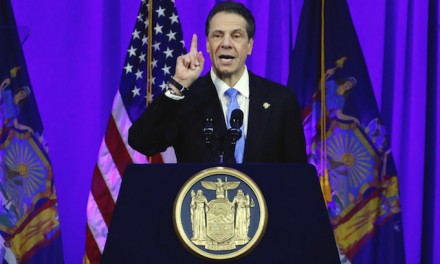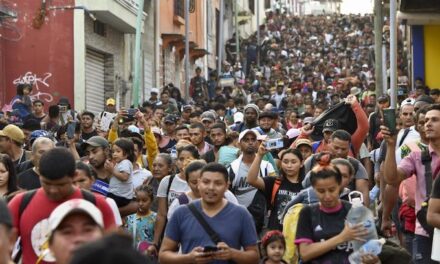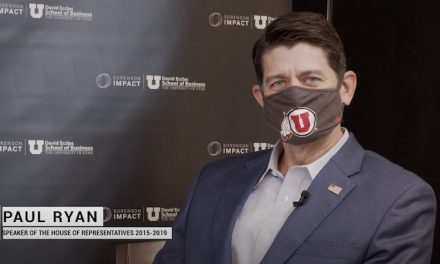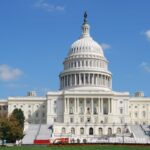In September 2018, a hundred supporters excitedly welcomed Clive and Oneita Thompson into sanctuary at the First United Methodist Church of Germantown, where they would be shielded from deportation while they fought to stay in the United States.
“Friends,” the Rev. Bob Coombe told the crowd, “we’re in it for the long haul. However long it takes.”
The long haul turned out to be two years.
Last late month, the undocumented Jamaican couple settled into a University City church after First United Methodist told them and a second family they would have to move.
“It hit us like a ton of bricks, to be honest,” Oneita Thompson, 48, said in an interview. “We had no choice.”
The church had reached a breaking point in hosting two families. Call it sanctuary fatigue: Desperate migrants, churches, and supporters joyfully join in protective alliance, only to find a year or so later that all are tired, stressed, and frustrated.
The circumstances are different in every situation. But in two of the four sanctuary cases in Philadelphia since late 2016, immigrant families ended up leaving one church for another. In a third case, the family in the same church as the Thompsons won government permission to stay in the U.S., departing First United Methodist before they, too, would have had to move.
“We did what we could over two years,” Coombe said when the Thompsons departed. “The volunteers were tremendous and gave a whole lot.”
The Thompsons, who in 2004 fled death threats in Jamaica to build a life in South Jersey, entered sanctuary with a son and daughter, both American citizens by birth. On the same day, the church welcomed Suyapa Reyes and her four young children. She came to this country in 2014 after gangs threatened her life in Honduras. Both families had been denied asylum by the federal government.
First United Methodist, known as FUMCOG, suddenly was housing nine people, most of whom could not so much as step outside for fresh air, lest they risk arrest by ICE.
“This church saved lives,” Coombe said. Both families “lost their freedom and the outside world…but their lives were saved. They weren’t deported.”
He stressed that both families would have been permitted to stay until new quarters were available, however long that took.
Sanctuary is a bold defiance of what activist churches say are unjust immigration laws. It offers families protection, but the publicity also alerts enforcement agencies to their exact location. Depression can be common among those stuck inside.
Other factors play into its difficulty: Constant closeness, challenging interpersonal relationships, cultural differences, and changing expectations can shred rapport between family members, supporters, and church staff.
Over time, small annoyances can grow into big problems. At FUMCOG, for instance, the roaming of Reyes’ rambunctious young children upset the day-care center, a church tenant that felt its programs were being disrupted.
These days, sanctuary is harder than ever. The pandemic largely cut off the flow of visitors who provide emotional support to families and hampered their ability to hold-fundraisers and sell handmade goods. Meanwhile, the Trump administration has threatened sanctuary families with significant fines.
“We’re all fatigued, because of the oppression of this administration,” said Kristin Kumpf, director of human migration at the American Friends Service Committee.
At the time the Thompson and Reyes families entered the church, it seemed like everyone in immigration circles was talking about sanctuary. News reporters flocked as families and church leaders across the nation pitted themselves against the federal government.
From 2016 to 2018, as ICE increased enforcement actions, the number of immigrants in sanctuary jumped from five to 42, and the churches, synagogues, and mosques ready to offer housing nearly tripled to 1,110. Churches are considered safe because ICE’s “sensitive locations” guidelines dissuade agents from taking action at schools, hospitals, and houses of worship.
Today, 40 people in 16 states are in sanctuary. Most have been there two to three years.
The goal of sanctuary is to buy time — for legal cases to go forward, for advocates to generate pressure, for elections that might change the government’s direction.
“The reality of sanctuary, once the TV cameras leave, once you settle into it, it’s very hard,” said Peter Pedemonti, co-director of New Sanctuary Movement of Philadelphia. “You’ve lost your job, you’ve lost your freedom, you’re in a church every single day.”
For congregations and support groups like NSM, hosting a family requires planning and scheduling, not just to bring in food and supplies but for child care, legal meetings, and strategy sessions.
All day, every day, those helping the family, from volunteers to paid staff, are on call, said Blanca Pacheco, co-director of NSM, which has supported three families including the Reyes and Thompsons. “A child gets sick. The parent can’t leave the church to take them. We have to take them.”
The Rev. Renee McKenzie wasn’t surprised that the Thompsons left FUMCOG.
She was pastor of the Church of the Advocate in North Philadelphia when it welcomed — and a year later bid farewell — to an undocumented Mexican family of five.
“It’s labor- and love-intensive, helping a family like that in close quarters,” she said.
Carmela Apolonio Hernandez and her four children entered the Advocate in December 2017, days before they were to be deported. The church’s role was mostly to provide living quarters, McKenzie said.
But complications arose.
In March 2018, NSM erupted in dispute over its leadership, and the agency board fired three staff members. Two who were especially close to Hernandez formed a new support group, the Sanctuary Advocate Coalition. Hernandez dropped NSM.
That October, Hernandez dramatically left the church to confront Sen. Bob Casey in his Center City office. But he wasn’t there, and a day-long sit-in produced no resolution in her case.
The new coalition, though heartfully devoted, had fewer people. It lacked the deep bench of New Sanctuary Movement, which could draw on its 30-plus member churches for volunteers.
“It was a tremendous amount of work,” said Wende Marshall, a Philadelphia educator and activist who was part of that new coalition.
Church circumstances were changing, too. McKenzie was preparing to go on sabbatical, and the vestry was uncomfortable hosting a sanctuary family in her absence.
“It was tough,” said McKenzie, now a consultant to the Advocate. “If Carmela and her family wanted to stay, and that was the only option, I would have appealed [to church leadership].”
By December 2018, the Hernandez family had rejoined NSM and moved to a different house of worship, the Germantown Mennonite Church. In total, the family is nearing three years in sanctuary.
At FUMCOG, sanctuary frayed early.
In April 2019, seven months after the welcoming ceremony for the Thompsons and Reyes’, church leaders told NSM that hosting two families was too much.
The families weren’t getting along. They shared a shower and a kitchen — and little else. Reyes seemed more content with daily life. The Thompsons spoke up.
“I will always try to do what I can do to help my family,” Oneita said.
At a meeting in mid-2019, both families were told their time was up. Space had been a problem from the start. The strain was too much, church officials said, and it would be wrong to make only one of them leave.
The Thompsons were angry, dispirited, and more uncertain than ever about the future. They longed to return to their Cedarville home and to their jobs — Clive as a heavy-equipment operator at Bridgeton-based Cumberland Dairy, and Oneita as a certified nursing assistant at Friends Village retirement home in Woodstown.
By the end of the year, Tabernacle United Church in University City had become a candidate. The church had wanted to host a family, and was installing a shower and laundry in case that day came.
Then, in early 2020, the federal government reversed itself and allowed Reyes and her children to stay in the U.S. For her family, for the church, despite all the rigors and frustrations, sanctuary had worked. She packed and departed to freedom in mid-March.
The pandemic struck hard at about the same time, halting in-person church services and isolating the Thompsons in a big, empty building.
Only recently have they had more contact with people. On the day they moved into Tabernacle United, Oneita and Clive spoke to about 30 supporters gathered in the rain to welcome them.
How are they faring as they enter a second church and third year in sanctuary?
“Tired,” said Oneita, who has relentlessly campaigned for her family’s freedom. But “I’m going to write one more senator, one more pastor, one more friend. I’m going to keep reaching out.”
Tabernacle United plans to rotate its coverage team so people don’t burn out, said the Rev. Katie Aikins.
“We’re going to commit to this,” the pastor said. “We have to kind of trust the process.”
___
(c)2020 The Philadelphia Inquirer
Visit The Philadelphia Inquirer at www.inquirer.com
Distributed by Tribune Content Agency, LLC.
—-
This content is published through a licensing agreement with Acquire Media using its NewsEdge technology.



















Recent Comments